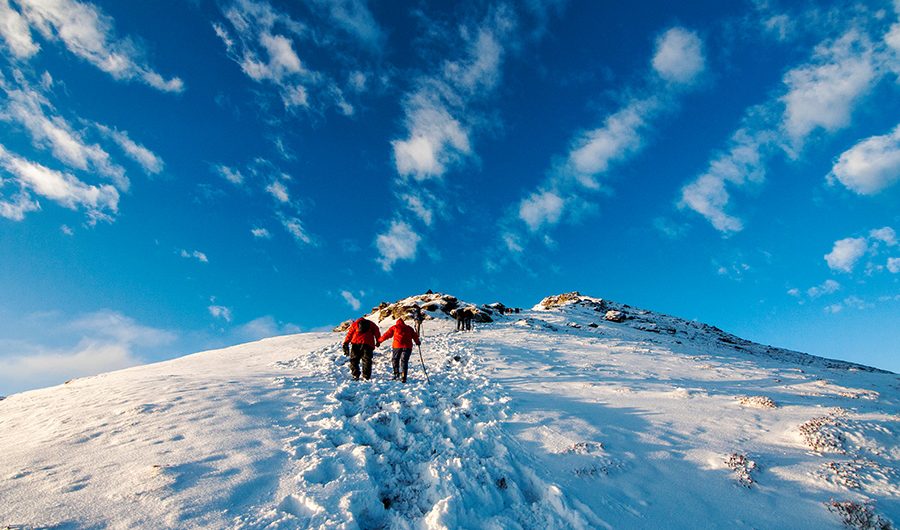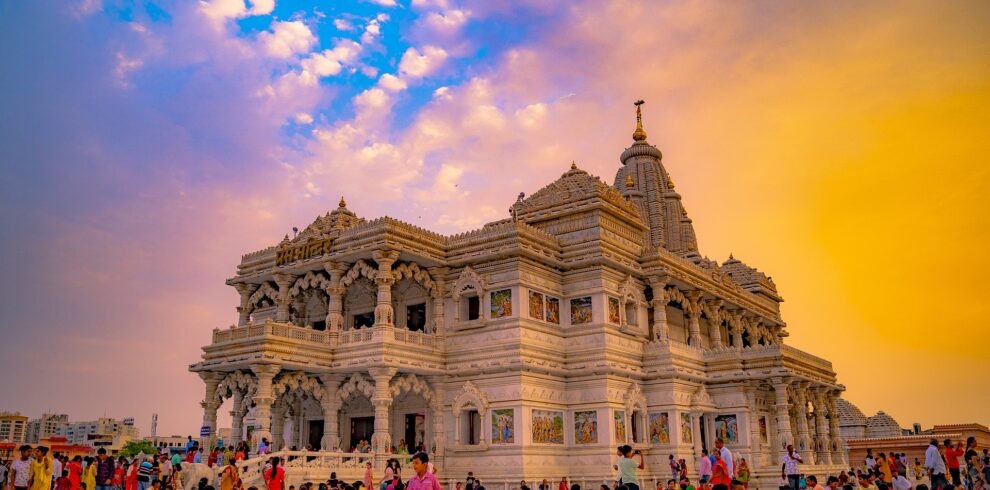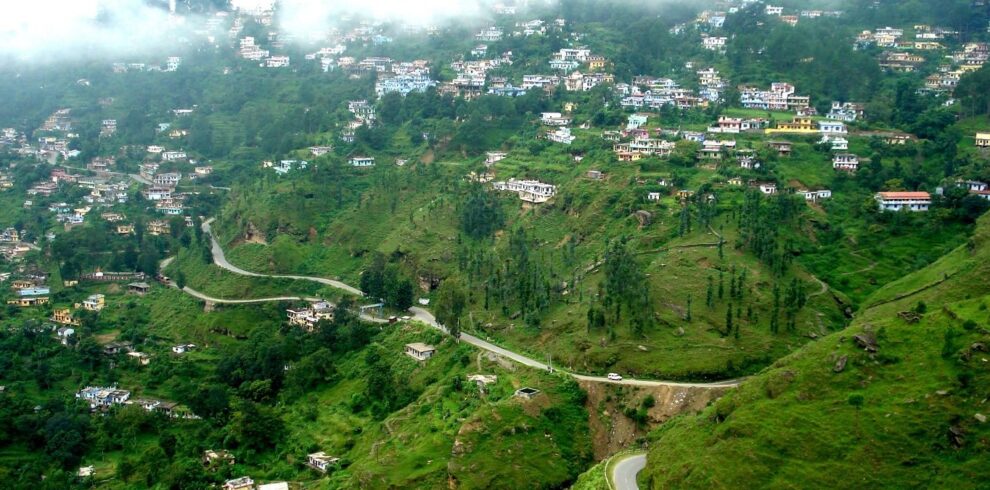Introduction
Nestled in the heart of the Garhwal Himalayas in Uttarakhand, India, the Kedarkantha Trek is a mesmerizing journey that offers a perfect blend of natural beauty, adventure, and cultural immersion. The trek, with its snow-covered trails, dense forests, serene meadows, and panoramic summit views, has become a favorite among trekkers of all levels. This comprehensive guide will walk you through every aspect of the Kedarkantha Trek, ensuring you are well-prepared for this unforgettable adventure.
History and Significance
The Kedarkantha Trek is not just a trek; it’s a journey through time and culture. Kedarkantha, meaning “Lord Shiva’s Throat,” holds significant mythological importance in Hinduism. According to local legends, the Kedarkantha peak was the site where Lord Shiva meditated, seeking refuge from the Pandavas during the Mahabharata era. The region is also dotted with temples and shrines, adding a spiritual dimension to the trek.
Best Time to Trek
The Kedarkantha Trek can be undertaken throughout the year, but the best times are during the winter months (December to April) and the pre-monsoon months (May to June). Each season offers a unique experience:
- Winter (December to April): This is the most popular time for the Kedarkantha Trek. The entire trail is blanketed in snow, transforming the landscape into a winter wonderland. The crisp air, snow-laden trees, and the pristine white path make for a surreal experience. However, be prepared for cold temperatures, especially at night.
- Spring (April to June): As the snow melts, the trail comes alive with blooming rhododendrons, lush green meadows, and vibrant flora. The weather is pleasant, making it an excellent time for those who prefer milder conditions.
- Autumn (September to November): Post-monsoon, the landscape is lush and vibrant, with clear skies and cool weather. This period also offers fewer crowds, providing a more serene trekking experience.
Trek Difficulty
The Kedarkantha Trek is classified as a moderate trek, making it accessible to beginners with a basic level of fitness. The trek involves gradual ascents and descents, with some steep sections, particularly on the summit day. Here’s a breakdown of the physical requirements and challenges:
-
Physical Fitness: While no prior trekking experience is necessary, a basic level of fitness is essential. Regular cardio exercises, strength training, and endurance-building activities such as walking, running, or cycling are recommended in the weeks leading up to the trek.
- Acclimatization: The highest altitude reached during the trek is 12,500 feet (3,810 meters). Proper acclimatization is crucial to avoid altitude sickness. It is advisable to spend a day at the base camp and stay hydrated throughout the trek.
- Weather Conditions: Be prepared for varying weather conditions. Winter trekkers should be ready for cold temperatures, snowfall, and potentially slippery trails. Proper gear and clothing are essential for a safe and comfortable trek.
Detailed Itinerary
Day 1: Dehradun to Sankri (200 km, 7-8 hours)
The journey begins in Dehradun, a city well-connected by road, rail, and air. From Dehradun, a scenic drive takes you to Sankri, the starting point of the trek. The drive is picturesque, passing through Mussoorie, and the Yamuna and Tons valleys. Sankri, a quaint village at an altitude of 6,400 feet, offers basic accommodations and serves as the gateway to the trek.
Day 2: Sankri to Juda Ka Talab (4 km, 4-5 hours)
The trek begins with a gradual ascent through dense pine forests, crossing a few streams. The trail opens up to a beautiful clearing with the serene Juda Ka Talab (lake). This high-altitude lake, surrounded by pine trees and snow-capped peaks, freezes during winter, creating a stunning sight. The campsite near Juda Ka Talab is a perfect spot to spend the night under the starry sky.
Day 3: Juda Ka Talab to Kedarkantha Base Camp (4 km, 3-4 hours)
The trail from Juda Ka Talab to Kedarkantha Base Camp continues through dense forests, interspersed with clearings offering glimpses of the surrounding mountains. As you approach the base camp, the landscape opens up to vast meadows, providing stunning views of the Kedarkantha peak. The base camp, at an altitude of 11,200 feet, is set against the backdrop of towering peaks, making it an ideal spot for photography and acclimatization.
Day 4: Base Camp to Kedarkantha Summit and back to Base Camp (6 km, 7-8 hours)
The summit day is the most challenging and rewarding part of the trek. An early start is essential to catch the sunrise from the summit. The trail is steep, and the ascent requires careful navigation, especially in winter when the path is covered in snow. Reaching the Kedarkantha summit at 12,500 feet is a moment of triumph. The 360-degree panoramic view from the summit includes the Gangotri, Yamunotri, and Kinner Kailash ranges. After soaking in the views, the descent back to the base camp is relatively easier.
Day 5: Base Camp to Sankri (8 km, 4-5 hours)
The return journey to Sankri follows the same route, allowing trekkers to revisit the beautiful landscapes experienced on the ascent. The descent is faster and less strenuous, giving you time to reflect on the journey and capture any missed photographic moments.
Day 6: Sankri to Dehradun (200 km, 7-8 hours)
The trek concludes with a drive back to Dehradun. The return journey offers an opportunity to relive the trek’s highlights and bid farewell to the mesmerizing landscapes of Uttarakhand.
Key Highlights
- Summit View: The Kedarkantha summit offers a breathtaking 360-degree view of famous peaks like Swargarohini, Bandarpoonch, Black Peak, and the Gangotri and Yamunotri ranges. The panoramic vista is a reward for the challenging ascent.
- Juda Ka Talab: This serene high-altitude lake, surrounded by pine trees and open meadows, is a visual treat. During winter, the frozen lake adds a magical touch to the landscape.
- Scenic Landscapes: The trek traverses through dense pine and oak forests, vast meadows, and charming villages. The changing landscapes, from snow-covered trails to blooming rhododendrons, keep the trek exciting and visually appealing.
- Cultural Experience: Interactions with the local villagers offer insights into the traditional lifestyle, customs, and hospitality of the Garhwal region. The villages of Sankri and others along the route provide a glimpse into the simple yet rich culture of the area.
Cost and Packages
The cost of the Kedarkantha Trek can vary depending on the trekking company, duration, and inclusions. On average, the cost ranges from INR 8,000 to INR 15,000 per person. This typically includes:
- Permits and entry fees
- Accommodation (tents and guesthouses)
- Meals (breakfast, lunch, dinner, and snacks)
- Professional guide and support staff
- Transportation from Dehradun to Sankri and back
It is advisable to book through a reputable trekking company to ensure safety, proper arrangements, and an enriching experience.
Packing Essentials
Proper packing is crucial for a comfortable and safe trekking experience. Here’s a comprehensive packing list for the Kedarkantha Trek:
- Clothing:
- Thermal wear (top and bottom)
- Fleece jacket or sweater
- Down jacket (for winter)
- Waterproof and windproof jacket
- Trekking pants and warm trousers
- Woolen socks and regular trekking socks
- Warm gloves and waterproof gloves
- Woolen cap and balaclava
- Sun hat or cap
- Footwear:
- Sturdy trekking shoes with good grip
- Gaiters (for winter to prevent snow from entering shoes)
- Comfortable sandals or camp shoes
- Gear:
- Backpack (40-50 liters) with rain cover
- Daypack (20 liters) for essentials during the trek
- Trekking poles
- Headlamp with extra batteries
- Sunglasses (UV protection)
- Water bottles or hydration pack
- Personal first aid kit
- Sleeping bag (rated for sub-zero temperatures)
- Personal Items:
- Toiletries (toothbrush, toothpaste, biodegradable soap, toilet paper)
- Sunscreen (SPF 50+)
- Lip balm (SPF rated)
- Wet wipes and hand sanitizer
- Snacks and energy bars
- Camera with extra batteries and memory cards
- Documents:
- Valid ID proof (Aadhaar card, passport, etc.)
- Trekking permits and medical certificate (if required)
- Emergency contact information
Tips for Trekkers
- Acclimatization: Spend a day at the base camp to acclimatize and reduce the risk of altitude sickness. Listen to your body and take it slow, especially if you feel any symptoms of altitude sickness.
- Stay Hydrated: Drink plenty of water to stay hydrated. Carrying a hydration pack or water bottles is essential. Avoid drinking directly from streams and lakes.
- Layering: Dress in layers to manage your body temperature effectively. Remove layers when you feel warm and add them when it’s cold.
- Follow the Guide: Always follow the instructions of your trek guide. They are experienced and trained to handle emergencies and ensure your safety.
- Respect Nature: Leave no trace. Carry back all your trash, respect wildlife, and stick to designated trails to minimize your impact on the environment.
Getting There
The Kedarkantha Trek starts from Sankri, a small village in Uttarakhand. Here’s how to get there:
- By Air: The nearest airport is Jolly Grant Airport in Dehradun, approximately 220 km from Sankri. Regular flights connect Dehradun with major cities in India.
- By Train: Dehradun railway station is well-connected with major cities. Trains like Nanda Devi Express and Dehradun Express offer convenient options.
- By Road: Regular buses and taxis are available from Dehradun to Sankri. The drive takes around 7-8 hours, passing through scenic routes and charming towns.
Conclusion
The Kedarkantha Trek is a captivating journey that offers a perfect blend of adventure, natural beauty, and cultural experiences. Whether you are a first-time trekker or an experienced adventurer, this trek promises to leave you with memories of a lifetime. From the snow-covered trails of winter to the blooming landscapes of spring, every season offers a unique experience. So pack your bags, lace up your trekking boots, and get ready to explore the majestic Kedarkantha!
Itinerary
Pick up from Dehradun Airport / Railways station Haridwar
A 200 km drive to Sankri Via Mussuorie, Kempty Falls, Netwar & Purola.
Arrival at Sankri village by evening, Check in Guest house/Hotel. Dinner and rest at the guesthouse/hotel.
Trek to Juda Ka Talab campsite after breakfast.
The trail is of easy to moderate ascend passing through dense forests of Oak & Rhondendrone Arrival at Juda Ka Talab campsite followed by lunch and rest in the camps.
The Tal remains frozen during the winter season and a great sight to watch.
Evening refreshments, Group Activities and dinner at the campsite.
Overnight stay in the camps.
Trek to Kedarkantha Base Camp from Juda Ka Talab after breakfast.
Arrival at base camp around lunch
An evening acclimatization walk followed by evening refreshments. Early dinner and rest in the camps.
Early morning Trek to Kedarkantha Peak at 4 AM after light breakfast.
Steepy and moderate climb of 3.5 km with level walks in between.
Carry at least 1-2 litres of water individually as the trail is deprived of water points.
Packed lunch at the summit point of the trek.
Descend back to Hargaon Base camp from the peak.
Refreshments and evening snacks after arriving at base camp.
Dinner and rest in Camps.
Descend down to Sankri Village from Hargaon camp after breakfast at Hargaon camp
Arrival by Leave for Dehradun and final drop .






